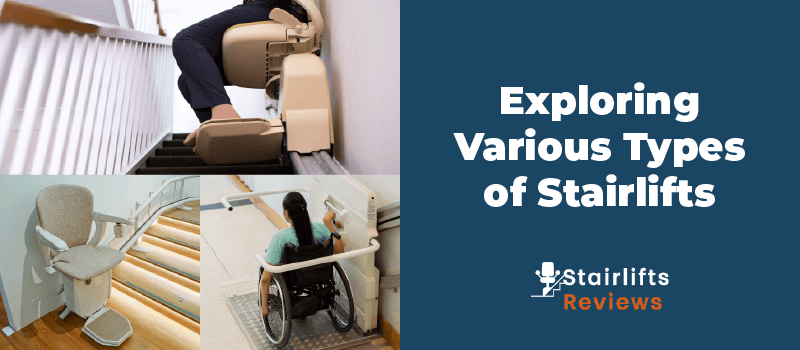
Installing a stair lift for the elderly or for someone with a disability is one of the most effective ways to improve accessibility at home. Whether for indoor or outdoor use, stairlifts provide a safe, reliable, and convenient mobility solution for individuals with different physical needs.
This guide covers the main types of stairlifts, their compatibility with different staircases, user suitability, and cost ranges—helping you make an informed decision to enhance accessibility in your home.
Instead of spending hours comparing stair chair lifts, let us help you find the best stair lift for your needs. Get up to three free tailored quotes from trusted UK suppliers in seconds. Compare prices, features, and services effortlessly.
There are seven types of stairlifts, each designed with unique features to accommodate specific requirements. Common types of stairlifts include straight, curved, standing ones, platform, and outdoor models. Specialised options such as heavy duty, mobile, second hand stair lifts, and rented stairlifts can accommodate specific needs. Below is a quick overview of the different stairlift types, their suitabilities, and the cost range including installation.
| Type of stairlift | Staircase & user | Cost range + Fit (£) |
|---|---|---|
| Straight stairlift | Straight | most | £2,500 – £4,500 |
| Curved stairlift | Curved, cornered |most | £6,000 – £12,000 |
| Standing | Narrow, straight | sitting issues | £4,500 – £8,000 |
| Platform | Any | wheelchair | £7,000 – £12,000 |
| Heavy duty | Any | heavier | £5,000 – £9,000 |
| Outdoor stairlift | Outdoor|most | £3,500 – £6,500 |
| Mobile stairlift | Any | temporary | £1,500 – £3,500 |
| Reconditioned | Any | low-budget | £875 – £4,000 |
| Rented stairlift | Any | short-term | £40 – £150/month (Fit £350 – £1,000+) |
| These costs are estimates. | ||
There are various home stair lifts designed to improve accessibility and mobility indoors. These stairlifts are built to fit different staircase layouts while ensuring a safe, comfortable, and convenient experience. Whether you need a straight, curved, or standing stairlift, manufacturers provide tailored solutions to meet individual needs.
Below is an overview of the most popular indoor stairlift types, helping you find the best fit for your home.
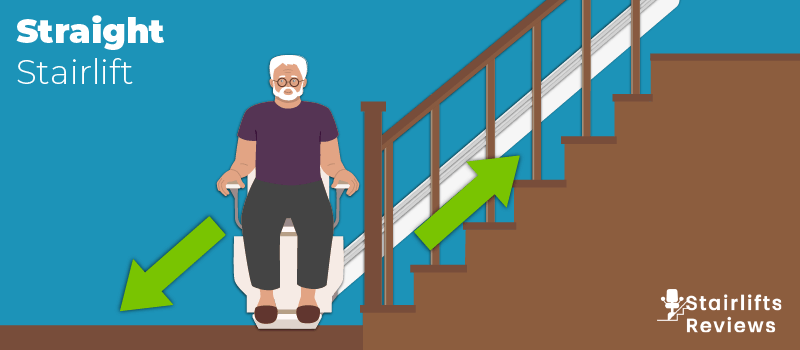
Straight stairlifts are ideal for homes with straight staircases. They offer a safe, reliable, and cost-effective mobility solution. Prices range from £2,500 to £4,500, including installation.
These stairlifts attach to the side rail of the staircase and are battery-powered, with a charging station at the bottom. They must remain plugged in to ensure uninterrupted operation.
Designed for ease of use, they feature adjustable seating and can be controlled via a remote, control panel, or joystick, making them a user-friendly option for elderly individuals.
Aspect Details
| Pros straight stairlifts | Cons of straight stairlifts |
|---|---|
| Simple installation | Limited to straight staircases |
| Affordable |

A curved stair lift is essential for staircases with bends, corners, or landings. It requires a custom rail tailored to the exact shape of the stairs. Unlike straight stairlifts, which use standard rails, curved models need precise measurements and individually manufactured tracks, increasing complexity.
Their higher cost is due to custom fabrication, advanced motor technology, and specialised installation, which often requires on-site adjustments. These stairlifts are ideal for multi-level homes, spiral staircases, or narrow staircases where a straight model won’t fit.
While they significantly improve mobility and independence, curved stairlifts require a lead time of 4 to 8 weeks for manufacturing and installation, depending on the staircase’s complexity and the supplier. Their bespoke nature makes them more expensive than standard models.
Aspect details
| Pros of curved stairlifts | Cons of curved stairlifts |
|---|---|
| Provides a smooth ride on curved or multi-floor staircases | Higher cost due to customisation |
| Highly customisable | Longer installation time |

A standing stairlift, or a step-on or stand-on stairlift, is ideal for users who find sitting difficult due to knee, hip, or joint issues. Unlike traditional stairlifts, these models allow users to remain upright while travelling up and down the stairs.
For safe use, standing stairlifts need a minimum staircase width of 650mm (25.6 inches) and at least 1.6m (63 inches) of headroom.
They include handrails, safety belts, and footrest sensors to ensure stability and prevent falls. Providers like Stannah and Senior Stairlifts offer compact models suitable for narrow staircases and homes with limited space.
Aspect details
| Pros of standing stairlifts | Cons of standing stairlifts |
|---|---|
| Ideal for users who have difficulty sitting | Not suitable if the user cannot stand for the duration of the ride |
| Compact design |
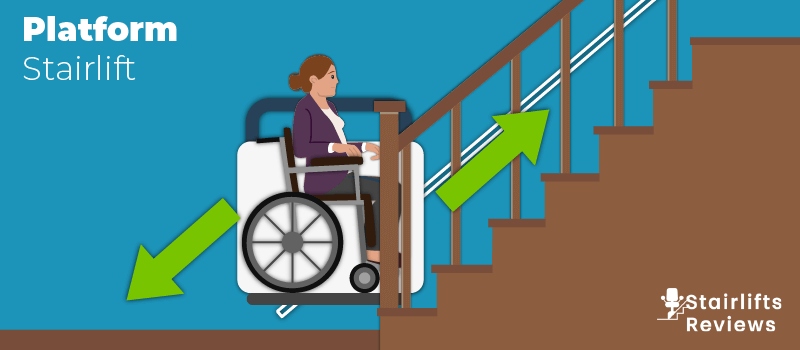
A platform stairlift is a type of disabled stairlift designed for wheelchair users, including elderly wheelchair users, who need to move between floors without transferring to a seat. These stairlifts feature a large, stable platform that securely holds a manual or powered wheelchair, ensuring safe and independent movement in homes and public buildings. For those seeking a more flexible option, a wheelchair lift can also provide accessibility solutions in various settings.
Platform stairlifts require a minimum staircase width of 900mm (35.4 inches) and sufficient landing space for smooth entry and exit.
They are available in indoor and outdoor models, with safety features like barriers, anti-slip surfaces, and emergency stop functions to enhance user security. Reputable providers offer various options to fit straight, curved, or steep staircases.
Aspect details
| Pros of platform stairlifts | Cons of platform stairlifts |
|---|---|
| Wheelchair user-friendly | Requires more space |
| Ideal for indoors or outdoors | Higher cost |
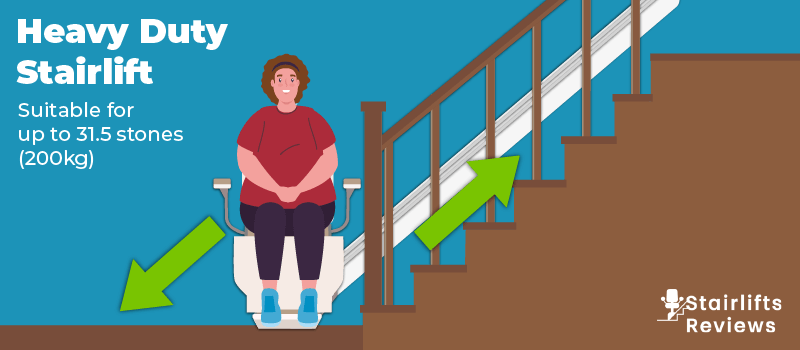
Heavy duty stairlifts are designed for users weighing 25 stone (158 kg) to 31.5 stone (200 kg). Built with reinforced materials, wider seats, upgraded batteries, and sturdy rail systems, they provide stability, durability, and comfort.
These stairlifts are easy to use, featuring armrest controls, remote options for caregivers, and enhanced safety features such as seat belts, swivel seats, and obstruction sensors. Many models also include battery backup systems, ensuring continued operation during power outages.
Installing a heavy-duty stairlift significantly improves mobility, accessibility, and independence, offering a safe and practical solution for heavier users.
Aspect Details
| Pros of heavy duty stairlifts | Cons of heavy duty stairlifts |
|---|---|
| Supports higher weight capacities | Bulkier design |
| Robust and reliable | Higher cost |
| Enhanced safety features |
Beyond standard indoor models, there are specialised stairlifts designed for outdoor use, reconditioned options, and rental solutions, catering to various mobility needs.
Outdoor stairlifts are built to withstand extreme weather conditions, including temperatures ranging from -15°C to 40°C. These stairlifts feature rust-resistant aluminium or stainless steel rails, UV-protected seats, and waterproof covers, ensuring durability and long-term reliability.
With rising demand, outdoor stairlifts improve accessibility to gardens, patios, and terraces, offering secure navigation for individuals with mobility limitations.
Aspect Details
| Pros of outdoor stairlifts | Cons of outdoor stairlifts |
|---|---|
| Built for outdoor use | Needs more maintenance |
| Weather-resistant | More costly |
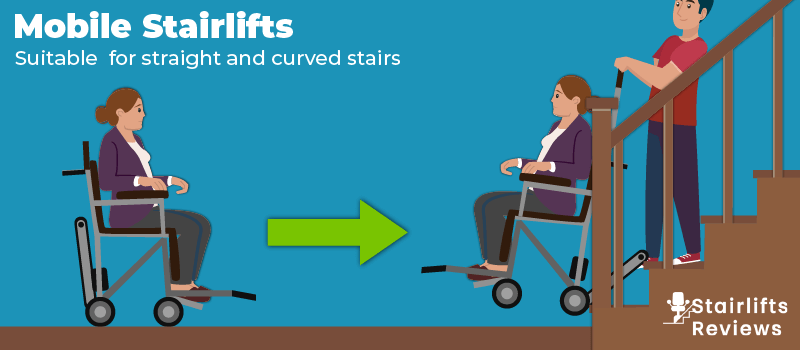
Mobile stairlifts are battery-powered, portable devices designed for temporary use or travel. Unlike fixed stairlifts, they require no installation and can be used on straight or curved staircases.
These stairlifts typically weigh 25–40 kg, making them lightweight and compact, while foldable frames and carry handles improve portability. Many models feature rubber caterpillar tracks or motorised wheels, allowing smooth operation on different stair surfaces.
With increasing demand in the UK, mobile stairlifts offer a flexible alternative for elderly individuals, post-surgery patients, or those needing short-term mobility solutions.
Aspect Details
| Pros of mobile stairlifts | Cons of mobile stairlifts |
|---|---|
| For temporary use | Not as robust as installed ones |
| Easy to move and use | |
| No installation cost |
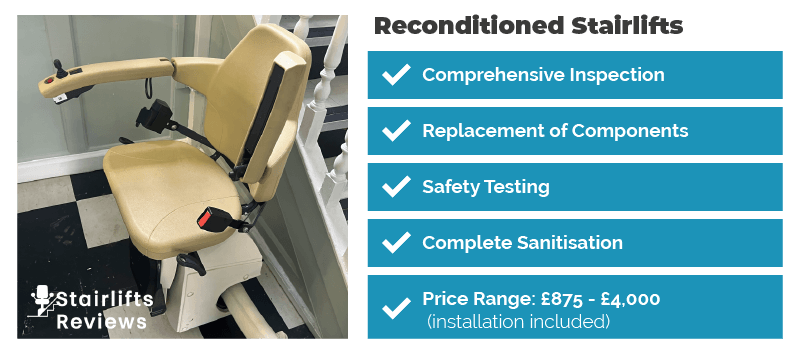
Reconditioned stairlifts provide a cost-effective and eco-friendly alternative to buying new. As one of the most popular affordable stairlifts, they offer a budget-friendly solution while maintaining safety and reliability.
Each stairlift undergoes strict refurbishment to meet British Standards Institution (BSI) safety regulations. This process includes:
✔ Replacing worn components for optimal performance
✔ Software updates to improve efficiency
✔ Rigorous safety testing to ensure reliability
These stairlifts are ideal for budget-conscious buyers, those needing quick installation, or anyone looking for a sustainable solution. They offer the same safety and reliability as new models—at a lower cost.
Aspect details
| Pros of used stairlifts | Cons of used stairlifts |
|---|---|
| Cheaper | Limited customisation options |
| Safe and reliable | May have shorter lifespans |
| Warranty |
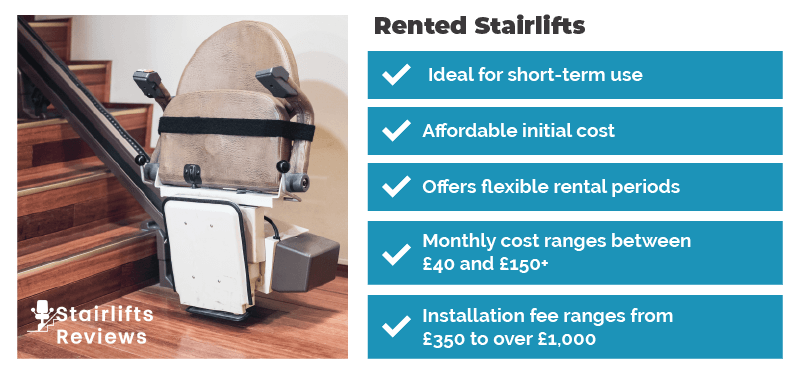
Rented stairlifts are ideal for short-term mobility needs, such as post-surgery recovery or temporary stays. They provide access to a stairlift without the upfront cost or long-term purchase commitment.
Rental agreements typically include maintenance and servicing, ensuring hassle-free use. Some providers also offer rent-to-own options, allowing renters to apply part of their payments toward ownership if they decide to keep the stairlift.
Before committing, it’s essential to check contract terms, cancellation policies, and potential buyout options to determine which option best suits your needs.
Aspect details
| Pros | Cons |
|---|---|
| Low initial cost | Higher long-term cost |
| Flexible for short-term needs | Limited customisation |
| Maintenance included | Not ideal for complex staircases |
| No upfront investment | |
| Quick installation | |
| Try before you buy |
If the available stairlift options don’t work, consider other choices like home elevators, stair climbers, or through-floor lifts.
Each alternative has its own benefits and factors to consider, depending on your mobility needs and home structure. But, these options typically cost more and are harder to install than stairlifts.
To begin with a stairlift, request quotes from different providers to compare and select the best solution for your needs and budget. Fill out the form to connect with local providers and improve home accessibility.
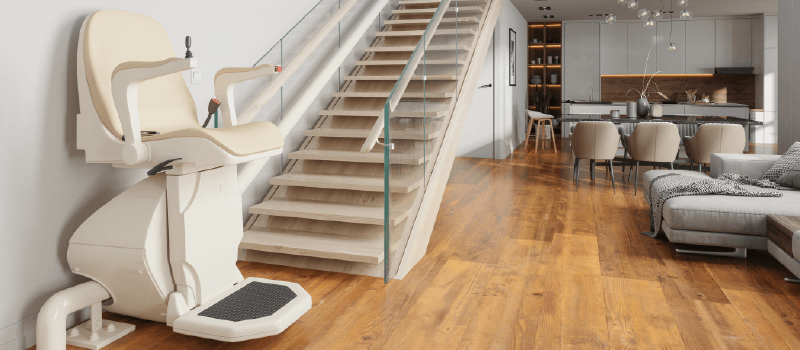
Choosing the right stairlift depends on your specific needs, your home’s layout and budget. Here’s a summary to help match your requirements with the best stairlift option:
Choosing the right stairlift depends on several things, including your needs, the layout of your home, and how much you can spend. Thinking carefully about these factors will help you find a stairlift that makes your life easier, safer, and more comfortable.
We can help you determine which type of stairlift is best or with payment options.
Our free quote service connects you with reputable stairlift providers in your area, ensuring you receive accurate and competitive quotes tailored to your specific requirements.
Simply fill out our form, and we’ll handle the rest, saving you time and effort.
What are the different types of stair lifts?
The different types of stairlifts include straight, curved, standing stair lifts, platforms, heavy duty, outdoor, mobile, reconditioned, and rented stairlifts. Each type meets different needs and staircase configurations.
What is the most reliable stair lift?
The most reliable stairlift depends on individual needs and home layout. However, brands like Shannah and Acorn are well-regarded for their reliability and customer service.
What type of stairlift is the cheapest?
Straight stairlifts are generally the cheapest, costing between £2,500 and £4,500 for newly installed versions. They are cheaper because they are simpler to install and do not require customisation for curves or corners. Reconditioned stairlifts also offer a budget-friendly option.
Is there an alternative to a stair lift?
Alternatives to stairlifts include home elevators, stair climbers, and through-floor lifts. Each alternative has its benefits and considerations depending on the user’s mobility needs and home structure. Although these alternatives may provide similar advantages, they typically incur higher costs and involve more intricate installation processes.
Rousanna Baird is an experienced content writer focused on mobility solutions, particularly stairlifts. Having written over 50 articles, she brings valuable insights into stairlift models, brands, and services. Her writing is built on thorough research and a deep understanding of the UK mobility sector. Rousanna specialises in offering clear, straightforward advice on stairlift options, pricing, and installation, ensuring readers can navigate their choices with confidence. Known for breaking down complex information into practical guidance, her articles provide a trusted resource for those seeking to enhance home accessibility with ease.